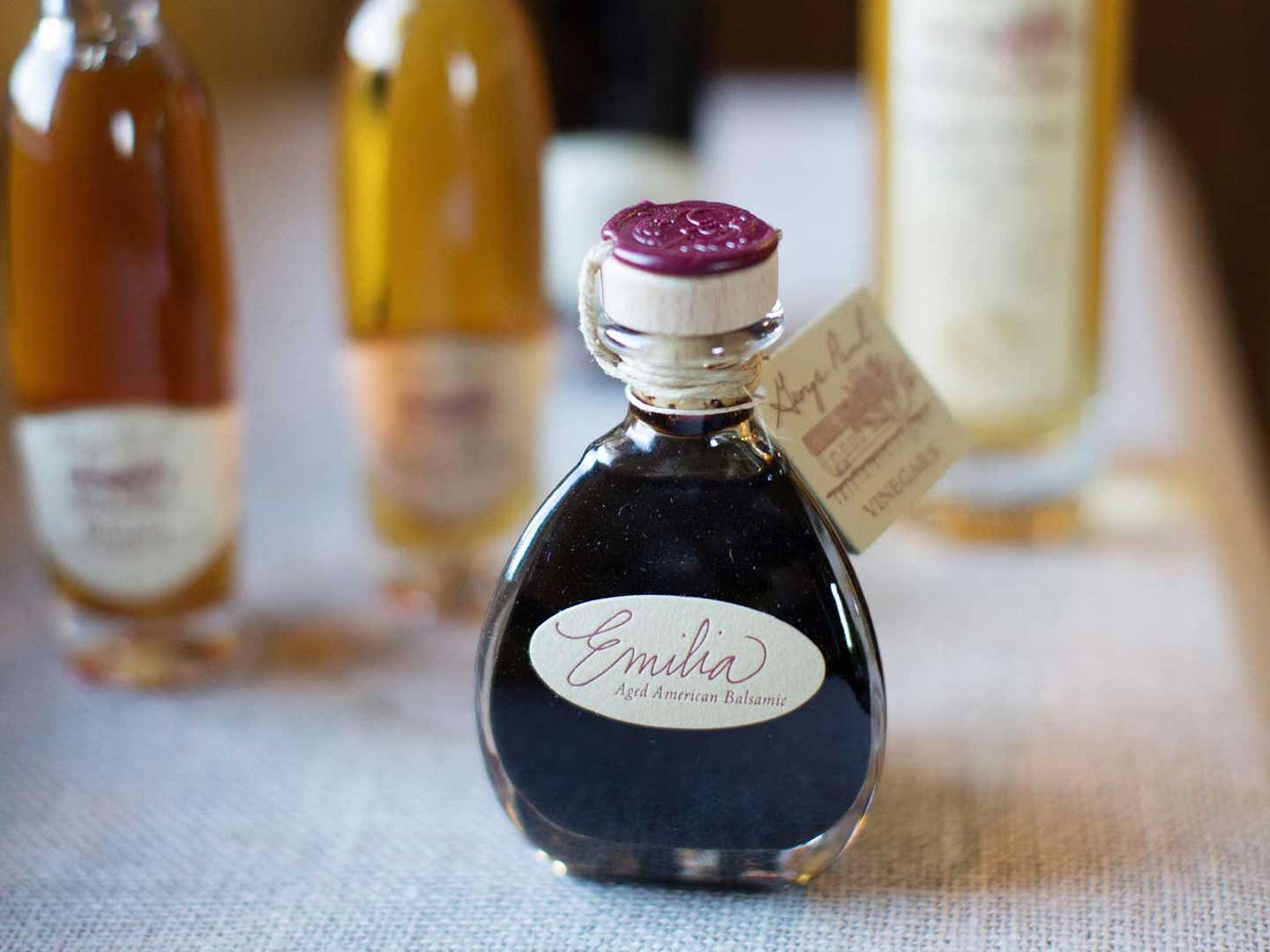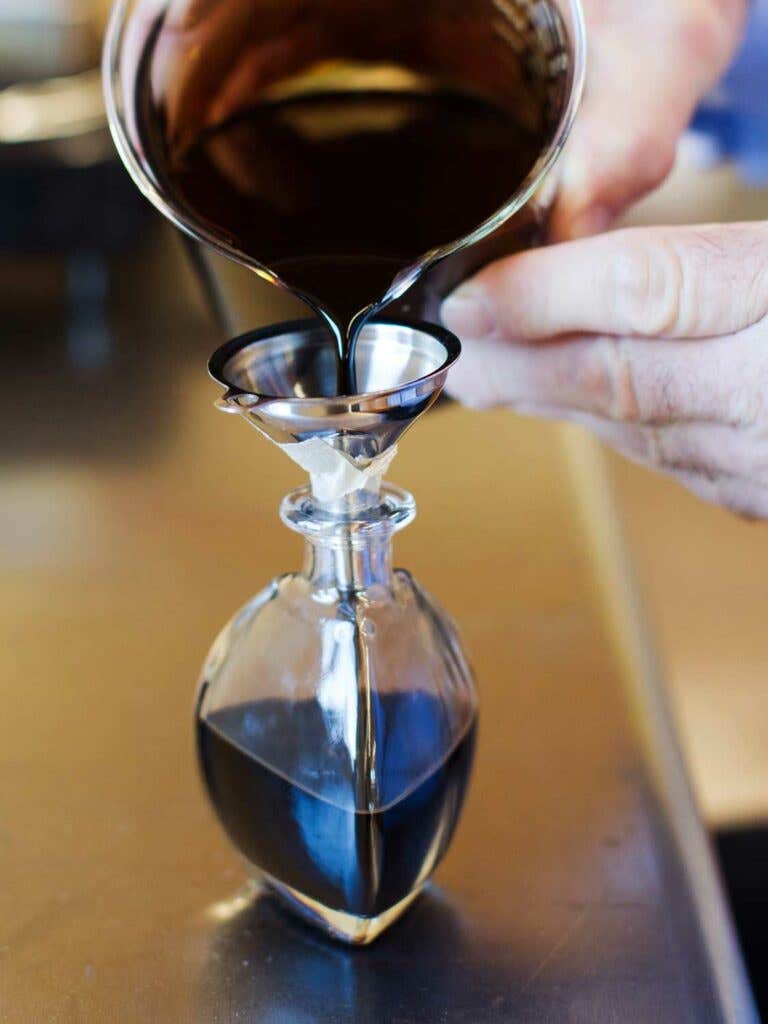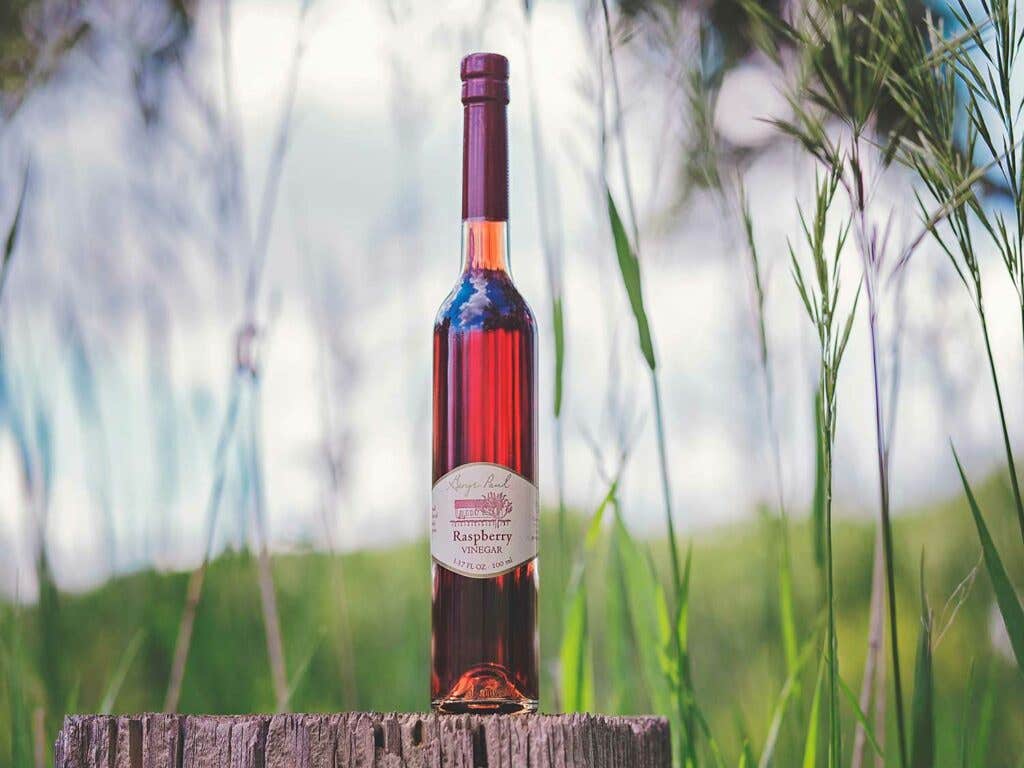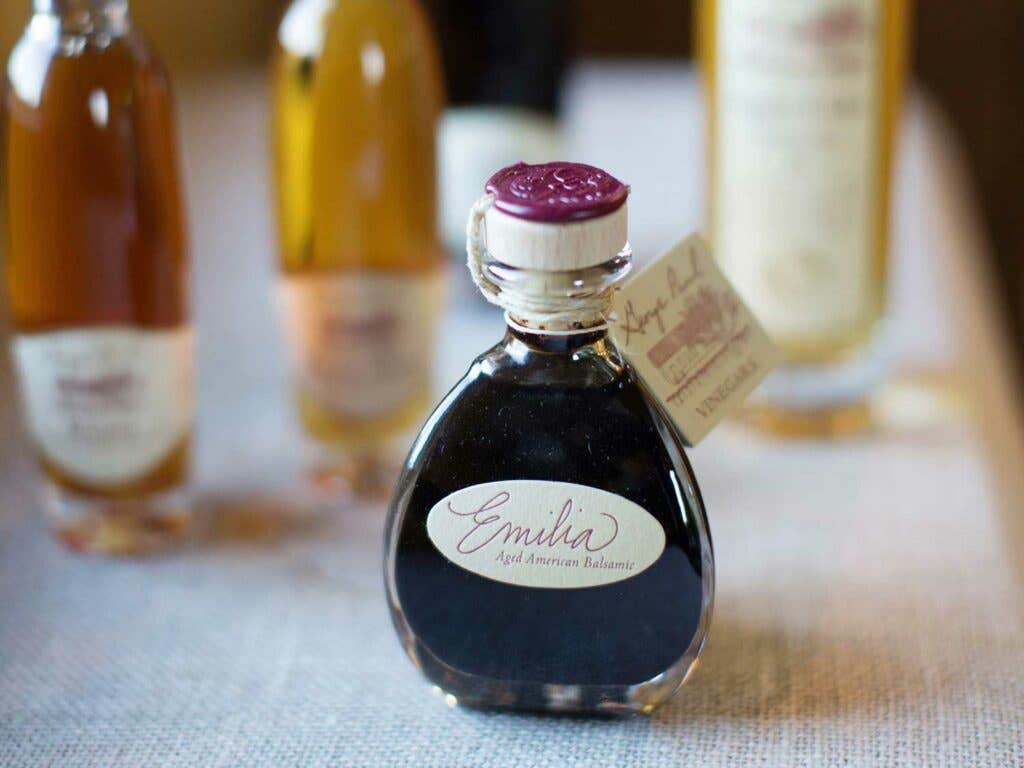
Meet the Man Making Modena-Style Balsamic Vinegar in Rural Nebraska
George Paul Johnson’s world-class vinegary is precisely in the middle of nowhere
With a population of about 200, Cody, Nebraska, is a quiet town. Only a handful of restaurants can be found within its city limits, a few other locally owned businesses, and a sole grocer, Circle C Market. Cody is so small, in fact, that there is no accomodation for a traveler passing through on her way to somewhere else. The closest bigger town is Valentin, nearly 40 miles east.
But for George Paul Johnson of George Paul Vinegar, and his wife, Karen, Cody is home—and has been since he was eight years old. His business is a short walk from the main street in a tawny-colored building, one that appears to be a house at first glance. This is where the magic of their vinegar begins—in a sustainable, energy-efficient production facility built in 2007 from straw bale, a centuries-old Sandhills tradition.

“When you get me talking about the vinegar business, I can talk for a long time,” Johnson, a retired cow rancher, said with a chuckle when I chatted with him. But owning and running a vinegary wasn’t a random venture that Johnson decided to take up in retirement. Because of his past careers he was familiar with agriculture and farming—skills he was able to parlay into a homemade vinegar business, which he launched in 2009. Despite being headquartered in a small town in Nebraska, his business has been able to thrive, mostly through word of mouth.
What characterizes Johnson's vinegary, however, is not its remoteness, but Johnson's impeccable attention to detail. All of his vinegars are crafted using old-world, traditional methods, the same methods used by balsamic vinegar makers in small Italian towns. "The way we make them—and it's a slow, gentle process—it literally happens all organically," Johnson said. "I don't mean organic in the sense of organic. But it's the cultures, the acetobacter cultures."
Acetobacter, a bacteria that produces acetic acid, is found almost everywhere, and is the basis of all vinegar. While most vinegar on your grocery store shelves is made as quickly as possible, in Johnson’s process, it ferments slowly, yielding a far more concentrated flavor and aroma as it ages.
“There really are no traditional, old-world vinegar makers left,” Johnson said. “They’re all dead and gone. There’s a handful of people that make them and sell them at local farmers markets around the country. But we’re really one of two companies that actually do it on a commercial scale and sell it nationally.”
Here’s how vinegar is typically made: It begins with fermentation and with Johnson’s vinegars, the process is two-fold. First, the fruit juices ferment, and yeasts convert the natural sugars into alcohol. Then, the acetobacteria present in this process feeds on the alcohol, which yields acetic acid. There’s also what is referred to as “the mother,” another byproduct of fermentation, essentially a living body of cellulose. Rather than speed up the fermentation process like most commercial vinegar makers do—a procedure that intentionally minimizes the production of cellulose—Johnson opts for a more natural, organic unfolding.

The eight varieties of vinegar Johnson makes all begin with locally grown and harvested fruits. Many vinegars begin, of course, as wine, and in the case of this vinegary, Niobrara Valley Vineyards, located 10 miles down the road, plays a pivotal role. Johnson, after all, is the head winemaker.
Because of the intentional slowness and its organic nature, the fruit flavor of Johnson’s vinegars are crisper, more pronounced. The apple cider vinegar actually smells of apples, and unlike most other cider vinegars you can get at your local grocer, the taste is reminiscent of them, too. The same could be said of his various red and white wine vinegars: Brianna, for instance, a single origin white wine vinegar, has a brighter flavor than most others, and Johnson said he routinely pairs it with fish and chips. The raspberry vinegar—made entirely from the fermented juices of summer raspberries—tastes as if they were picked straight from the field. Johnson recommends it drizzled over a scoop of vanilla ice cream.
With the exception of the apple cider vinegar, all their wine vinegars are aged in stainless steel tanks, spending an upwards of year to a year and a half there. The balsamic is on the longer end, aging first in American Oak barrels for three to four years, and then stainless steel tanks with various wood staves for up to eight years, concentrating both the flavor and aroma. Named “Emilia” after his daughter Emily, this balsamic is the star of Johnson’s collection. To craft his current version, Johnson talked to vinegar makers, bought several varieties of world-renowned Modena balsamic and researched intensively about balsamic production in Italy. He quickly learned his quest would not be an easy one.
“It’s a very, very tightly held secret,” Johnson said. “They don’t tell people exactly how they do it. But the general idea is out there. Over the years I’ve become acquainted with some people who have helped me tweak our production protocol.”
He eventually cracked the code, resulting in a product he’s proud of, though it’s a bit pricier than most vinegars on the market. Old-world-style vinegar means more time invested, which will drive up the price, but an aged vinegar also suffers quite a reduction in volume too. “From start to finish, we lose about 40 percent on average of volume,” Johnson said. “It just keeps reducing. That’s what’s concentrating the flavors and aromas. With the balsamic, we’re losing about 90 percent.”

Emilia’s $75 price tag means it’s certainly a culinary investment, but chefs and restaurateurs in Nebraska—like Clay Chapman of The Grey Plume in Omaha—rave about it. Johnson sends his vinegars all over the country, though, and is represented in Chicago, San Francisco, New York, Denver, St. Louis, Los Angeles, and beyond.
At almost a decade into a business he never anticipated, Johnson continues to learn about his craft of making vinegar, a smell of which he has learned to tolerate as he experiments on new varieties to sell.
His inspiration? The people. Watching the reactions of those who taste his vinegars for the first time and waiting to hear what they have to say. “We’ve had people come through our vinegary from all over the world,” Johnson said. “Senators, congressmen, governors. Regular folks from down the road. And they’re all friends when they come here.”
Keep Reading
Continue to Next Story










